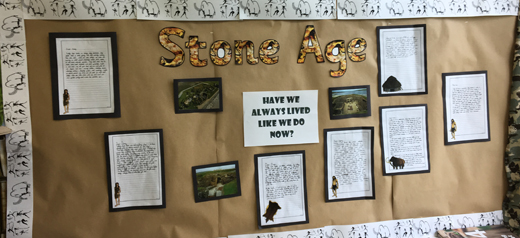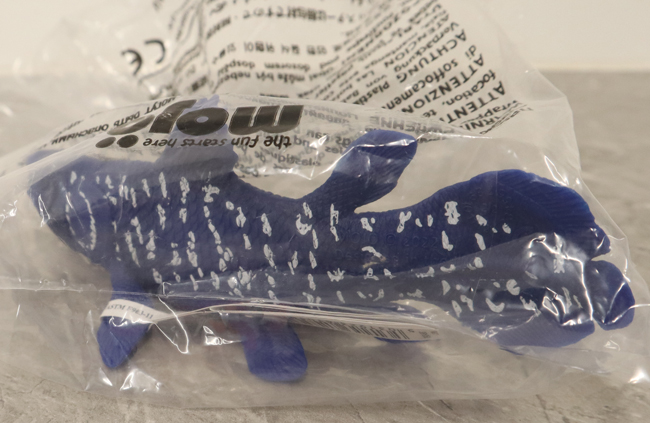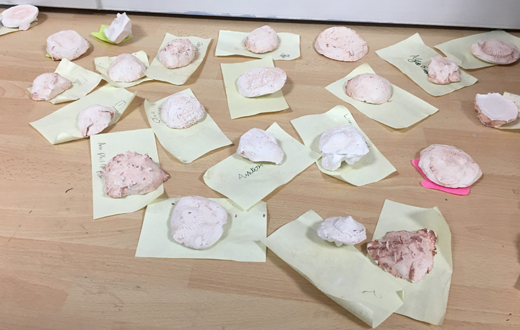Year 3 and Year 4 Explore Fossils
Children in Lower Key Stage 2 at The Acorns Primary and Nursery School have been enjoying learning about the Stone Age and prehistoric life. Under the enthusiastic tutelage of the teaching team, the three classes that make up Lower Key Stage 2 cohort have been developing their writing skills as well as investigating how fossils form and researching Mary Anning. We hope that the tongue twister “she sells sea shells on the sea shore” will help to inspire the children with their creative writing.
Examples of Cursive Handwriting Form Part of the Stone Age Display
Picture credit: Everything Dinosaur
Mary Anning and a Broad and Balanced Scheme of Work
The pupils were set lots of exciting challenges during our dinosaur and fossil themed workshops. Our dinosaur expert ensured that the activities that were proposed fitted in with the learning objectives set by the teachers. For example, looking at Woolly Mammoth fossils led onto introducing the idea of the class producing a piece of fiction writing imagining what it would have been like to go on a Woolly Mammoth hunt. One young girl proposed writing her story based on the viewpoint of the Mammoth – what a super idea!
With such an interesting topic, there is plenty of scope to introduce cross-curricular activities. Class 4ML have been looking at life in the rainforest and threats to existing habitats, the opportunity to learn more about extinction events and climate change certainly resonated with the young audience. We asked the Year 4 children to undertake independent research on the bizarre Coelacanth, a fish thought to have died out with the dinosaurs but now sadly, seriously threatened due to loss of habitat and the encroachment of human activity. The children loved the idea of learning about a fish that was the same colour as their school jumpers.
A Coelacanth Model – The Story of the Coelacanth – Helping to Link Topic Areas
Picture credit: Everything Dinosaur
The picture (above) shows a Mojo Fun Coelacanth figure. It is one of their models in the “Prehistoric and Extinct” model series.
To view this range: Mojo Fun Prehistoric and Extinct Models.
Making Fossils
Several very impressive plaster casts of fossils were prominently displayed. The children were keen to demonstrate their understanding by explaining what fossils are and how they form. The replica fossils included some amazing bivalves and snail shells. During the workshop, the children got the chance to handle real fossils including some “gigantic”, “enormous” ammonites. The ammonite shells reminded the children of snail shells, our fossil expert explained that snails and ammonites are distantly related and in a practical fish catching exercise, illustrated why ammonites, squid and octopi are classified as cephalopods.
Lots of Carefully Crafted Plaster Cast Fossils on Display
Picture credit: Everything Dinosaur
Once back in the office, we were able to email over some more resources to help the teaching team.
Visit the award-winning Everything Dinosaur website: Everything Dinosaur.




